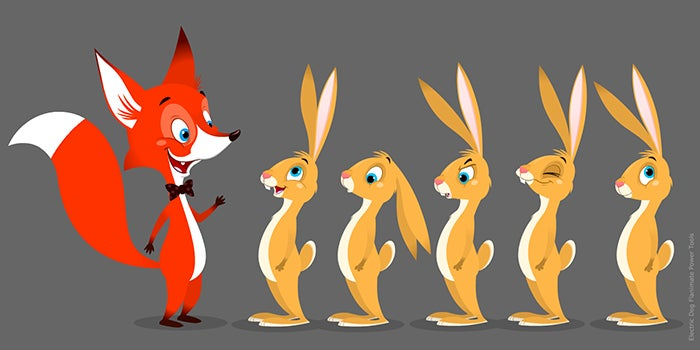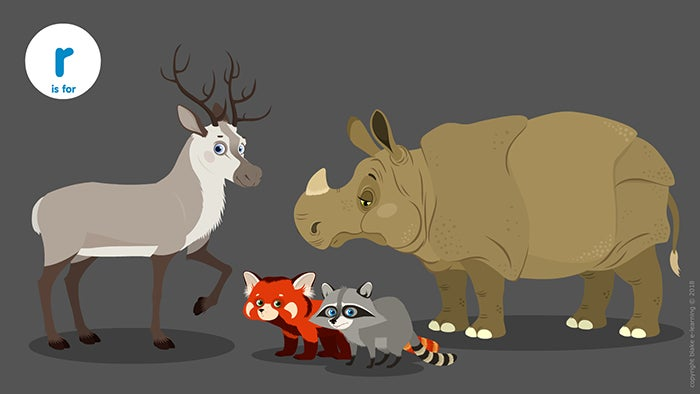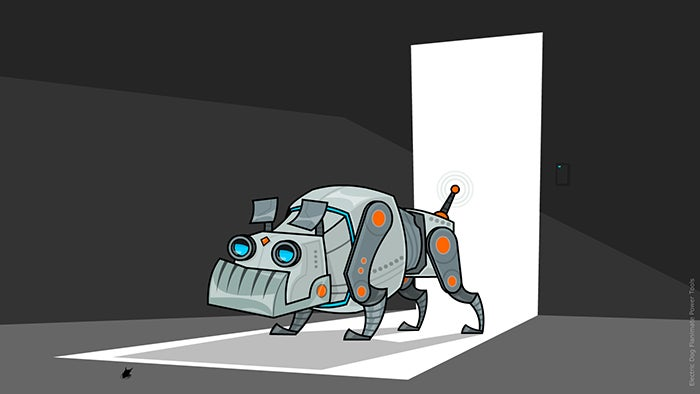Nickolay Tilcheff: Enhancing Animate for Animators
Exploring EDAP tools for Animate.

Animators, young and old, professional or amateur, creating movies, TV shows, YouTube content or social media content have all, at various times, pointed to EDAP Tools and how useful they have been to their work.
Here’s an example of content created in Animate with the help of EDAP Tools:
I had a chance to talk with Nickolay Tilcheff, who, along with Vladin Mitov, is the founder of Electric Dog, the company behind these tools. An animator for over 25 years and a wildlife enthusiast, Nick lives in Hobart, Australia. An affable demeanor with an almost spiritual personality, Nick instantly captivates you with his measured voice. Here’s an excerpt of our interaction.
What made you interested in arts, and how did you get into animation?
It must have happened too early to have a memory of a single event. I have been drawing and paying attention to form and light since I can remember myself.
Both my parents are architects and both are very capable drawers, knowledgeable and appreciative of all art forms. Words such as composition, balance, proportion, gamma, harmony, and perspective were spoken around me in conversations as I was growing up. Drawing materials were always available at home. My parents gave me praise for some of my sketches, and guidance when I needed it. I got pleasure out of drawing, and I kept doing it for hours.
By the time I was 11 or 12, I was absolutely fascinated by cartoons, knew how they were made, and had decided that I wanted to become an animator. I used to draw simple animations at the corners of the thicker textbooks.
I loved extreme cartoon violence and knew that if I saw Tex Avery, William Hanna, and Joseph Barbera in the opening credits it will be a great cartoon. It was more difficult to pinpoint exactly what drew me to the cartoons made by what I thought to be two brothers, Charles M. Jones and Chuck Jones. Now I know. It’s the brilliance of style, class, and timing.
Growing up behind the Iron Curtain I was also exposed to some Czech, Hungarian, Polish, and Russian animation, which had their own coziness, different themes, and a much broader stylistic variation than the Hollywood cartoons of the Golden Age.

Another thing that has always fascinated me is the natural world, the animals — their looks, their behaviors, their incredible adaptations. I had a period when I wanted to be just like David Attenborough. But high-end camera equipment and exotic wildlife were out of reach, so I had to stick to my pencils and markers.
In 1992, I started an animation course in Sofia and, during the first class, I sat next to a guy my age, called Vladin Mitov. Looking back at it, this was a life-changing event. Vlad became a lifelong friend and business partner.
Our animation teacher, Mr. Krassimir Ivanov, an established animation professional, was the best teacher a young man could dream of — approachable, knowledgeable, funny, encouraging, and inspiring. Not only this but a few years later, he was gathering a team to work on some early multimedia CD-ROM titles and invited me to join, which was my entry into the industry in 1994.
I later finished a film university, majoring in directing for animation and have worked on many TV shows and interactive titles since then. I’ve done nearly everything but specialize in character animation and character design.
In the last 10-15 years, I have also been sharing what I’ve learned with younger colleagues, either at the studios where I work or as a college lecturer. More recently I’ve been doing this online by writing articles, tutorials, and recording video demonstrations.
Here are two examples, Character Rigging for Flash Animation and Classic Tween Workflow.
Why extensions and tools for Animate (Flash)?
Flash is a major part of my life. We first met in 1998, and it wasn’t love at first sight.
Electric Dog v.1 was a service studio and, at the time, we were working on all kinds of edutainment titles for the U.S. market using raster-based workflows. Then suddenly clients started requesting Flash, as they could use the same assets both in-game and online.
At first we only utilized it as a digital ink and paint tool, but soon after that we started to understand the power of Symbols.
In the following years, Flash grew exponentially. I learned how to use it to achieve great results, and it has been my professional tool of choice ever since.
The core functionality of Flash was great, but at the time it wasn’t as animator-friendly as it is now. There were lots of problems with ergonomics. Some 10 years ago I was teaching at an animation college in Sydney, and students were puzzled by the lack of easy access to many frequently used functions.
So, after a short discussion with Vlad, we decided to resurrect the Electric Dog and start addressing these UX deficiencies. This was in 2010. Since then, Flanimate Power Tools grew and grew, both in popularity and functionality, and this surpassed even our wildest dreams.
Vlad and I work so well together on idea generation, troubleshooting, and problem analysis. It’s both very enjoyable and extremely rewarding.
Which of your projects or extensions are you most proud of, and why?
It has to be our invention of Smart Magnet Rigs.
It is a hybrid system which delivers the benefits of both the traditional “free-floating elements” approach in Flash, with its ease of use, and the “skeletal” approach, with its structure — while, at the same time, eliminating all the negatives and constraints that these two well-known approaches present.
The users are free to pose as they wish, using the Free Transform tool and any other in the default Flash/Animate toolset for as long as they want, but also the joints are magnetic and a body part can be snapped back into position at the press of a button. Elements know where they belong in the character hierarchy, so all kinds of chain selections are possible. KineFlex, one of our SMR tools, generates on-the-fly skeleton, which only exists during the transformation and does not impose any rigidity to the structure, the way traditional bone systems do.
We introduced the core functionality of Smart Magnet Rigs in 2013, and we constantly keep expanding the possibilities and the toolset with each new version of Flanimate Power Tools.
The tools work in all versions of Flash and Animate, starting from Flash 8.
Can you share a few examples of content where your tools have been used?
With pleasure!
This is a selection of favorite shots from a little kid’s show that I worked on as character and production designer and animator (among other roles).
The series is called Animal Alphabet, and it is produced by Blake eLearning for their Reading Eggs Junior program.
It’s worth noting that all of the above was achieved only in Flash/Animate, enhanced by Flanimate Power Tools — without any further compositing or editing.
If viewers are interested in my thought process behind the show, they can read this article: Organic Animation and Cinematic Look in Flash
And this other example is our announcement for the release of EDAP Tools v.5:
The source file is actually available for download from our website. Readers can open it and study its structure and how I animated a double-bounce walk cycle.
What are some of the things you are looking forward to in the near future?
In the nearest future, I’m really looking forward to the coming spring. Birds have already started to perform these wonderful concerts at 4 a.m.; possums wake me up at night and the trees are in bloom. Spring in Tasmania is beautiful, and I love how it stirs the wildlife into hyperactivity. I look forward to many bushwalks and photo shoots.
Vlad and I just released v.5 of EDAP Tools and have already started working on some bold new ideas, which have to remain secret for now.

I’m also planning to continue writing articles on digital cutout animation and making more video tutorials, whenever time permits.
Last, but not least, I will continue to contribute feedback and opinions to the Animate dev team to help them better understand the needs of animators and animation designers.

What would be your recommendation for someone looking to make a career in animation?
First and foremost, find realistic information about the industry, the work availability in their region, and the lifestyle that a long-term commitment to such a project-based industry would provide. It is not for everyone.
Then, ask themselves if there is something else they would want to do equally or more than to have a career in animation. If the answer is no, they have to adjust their expectations to match the reality and then be prepared to work very hard on building their own character. One needs to be extremely persistent, motivated, tactful, and realistic about their own skill level.
There is a lot of fake hype on how much fun it is to be an animator. Sure, there are fun moments and the results can be very rewarding, but mostly it is endless hours of super concentration and hard work, often in solitude.
In 2D animation, solid drawing ability is an absolute necessity. Young people should draw every day from life and from imagination, without limiting themselves to any one style. If they sense that some things are more difficult to draw than others, they should tackle those without delay. An animator has to be able to draw anything, from any angle, in any pose from imagination.
Choosing art as a career presents serious challenges. One needs to develop methods to stay creative and not burn out, to be able to produce professional-level content 8-10 hours a day, every day.
Building a solid foundation of anatomical knowledge and broader general culture, and practicing the animation principles should be a good start.
Formal education might help, especially the social aspect of it — getting inspired by peers and networking.
I encourage young people to draw on paper, not only digitally.
I am biased, but Adobe Animate is one of the most accessible, yet extremely powerful and versatile tools. Anyone interested in making animation should try it and give themselves enough time with it to fully grasp the possibilities that nested symbols present.
Where can I get more information about your tools, and how do I get them?
Electric Dog Flanimate Power Tools can be downloaded from our website. We also provide the necessary documentation, workflow suggestions, and sample files to get new users started.

Thanks, Nick. It was a pleasure talking with you.
I will be keen to talk with you if you are also creating extensions for Animate. You can always reach out to me at _<ajshukla@adobe.com_>.